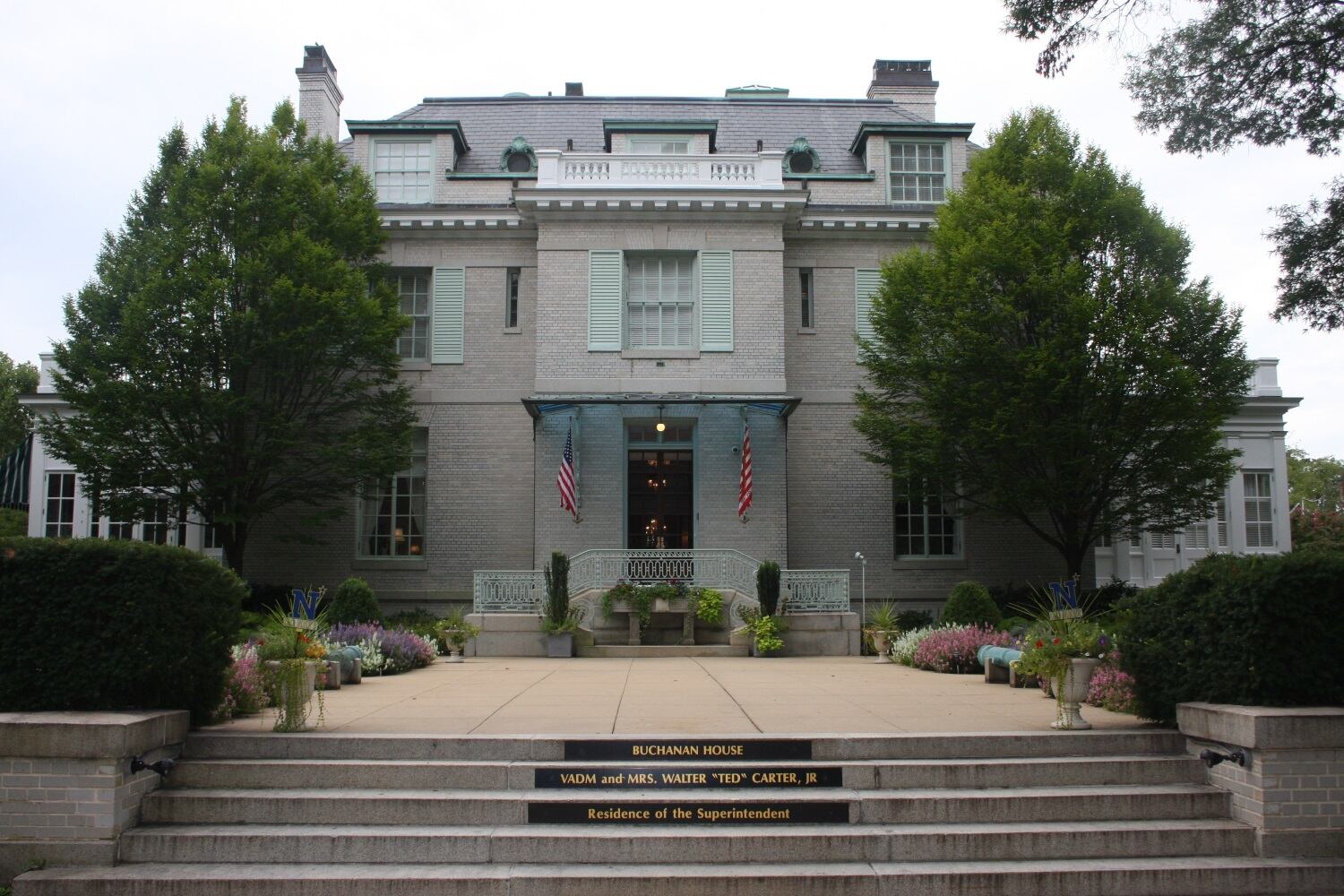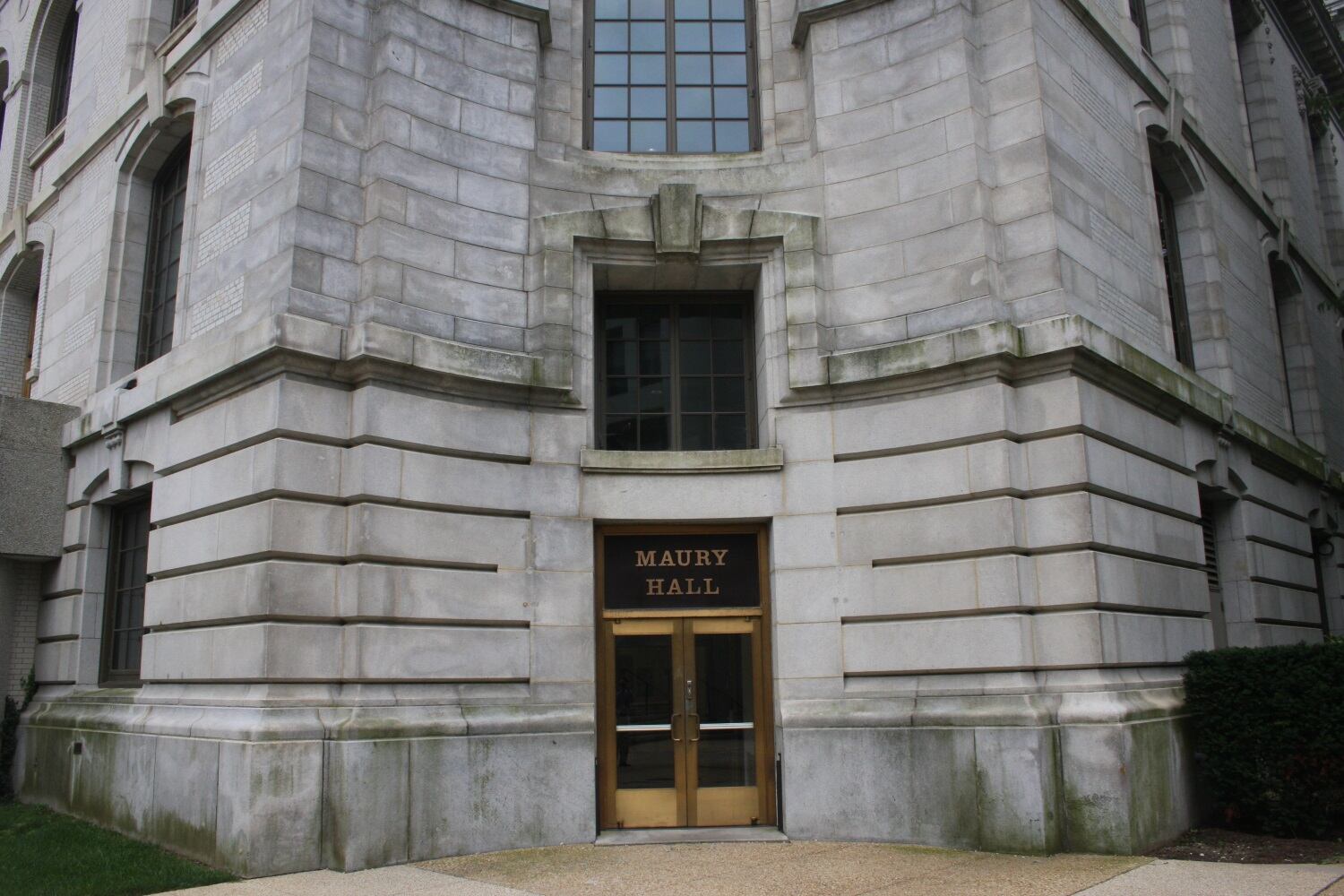ANNAPOLIS, Md. — At the U.S. Naval Academy, where the names of the nation’s military heroes adorn many buildings, two structures honor the memory of American naval officers who fought against the United States of America.
The Naval Academy superintendent’s stately home, which hosts thousands of visitors every year, and a building that houses the academy’s division of Weapons and Systems Engineering are both named for Confederates who took up arms against the U.S. in the Civil War.
They would have to be renamed under a measure now pending in Congress, as would a barracks named for Confederate Gen. Robert E. Lee at the U.S. Military Academy in West Point, New York. Separately, Sen. Kristen Gillibrand and Rep. Sean Patrick Maloney, both Democrats, have asked the secretary of the Army to rename the 55-year-old barracks at West Point.
The bill, sponsored by New York Rep. Yvette Clarke, a Democrat, would require the military to change the name of any property that honors individuals who fought for or supported the Confederacy.
While such a bill by a Democrat could face an uphill struggle in a highly polarized Congress, it’s part of a national push to remove monuments that honor Confederate leaders, after a woman was killed and dozens of others were injured when a car rammed into a crowd near a statue of Confederate Gen. Robert E. Lee this month during a protest in Charlottesville, Virginia.

The superintendent’s residence at Annapolis, known as Buchanan House, is named after Franklin Buchanan, the academy’s first superintendent who left to join the Confederate Navy at the outbreak of the Civil War. Buchanan had helped found the academy in 1845. Buchanan House was named after him in 1976, and a road beside the house also bears his name.
Maury Hall, home to the academy’s division of Weapons and Systems Engineering, is named after Matthew Fontaine Maury, a leader in the fields of naval meteorology and navigation. He headed the coast, harbor and river defenses for the Confederate Navy.
RELATED

U.S. Rep. C.A. Dutch Ruppersberger, a Maryland Democrat who serves on the Naval Academy’s Board of Visitors, said he believes the academy should be sensitive to how a black midshipman would feel about the building names. He noted that Buchanan had a position in the U.S. Navy and left to join the Confederacy and fight against the United States.
“I think we have to give it strong consideration,” Ruppersberger said, when asked if the names of the two buildings should be changed.

Richard Kingsberry, a regional commander for the National Association for Black Veterans in Charlotte, North Carolina, said the government “should not be in a position of uplifting and glamorizing those individuals” who served in the Confederacy.
“When we see better, we tend to do better, and now that the light is on these Confederate monuments, statues and streets — now that the light is on — we know better,” said Kingsberry, whose region represents Maryland, Delaware, West Virginia, Virginia, North Carolina and Washington. “And as a nation, we should know better, and we should do better by not perpetuating those traitors and haters of this nation.”
RELATED

Cmdr. David McKinney, a spokesman for the academy, said the school doesn’t have any current plans to rename any buildings.
The academy on the Severn River about 30 miles from the nation’s capital has buildings named after some of the nation’s most revered Navy figures. The library is named for Adm. Chester Nimitz, the U.S. Pacific Fleet commander during World War II. The black and white marble sarcophagus of John Paul Jones, the famed Revolutionary War naval officer and father of the U.S. Navy, is supported by bronze dolphins in an ornate crypt in the academy’s chapel, next door to the superintendent’s home.
The academy has about 4,400 students, and about 37 percent are minorities.
The debate over monuments already has had an impact close to the academy’s gates. Just blocks away last week at the Maryland State House, officials removed a statue of U.S. Supreme Court Chief Justice Roger B. Taney, who wrote the 1857 Dred Scott decision that upheld slavery and denied citizenship to African-Americans.





